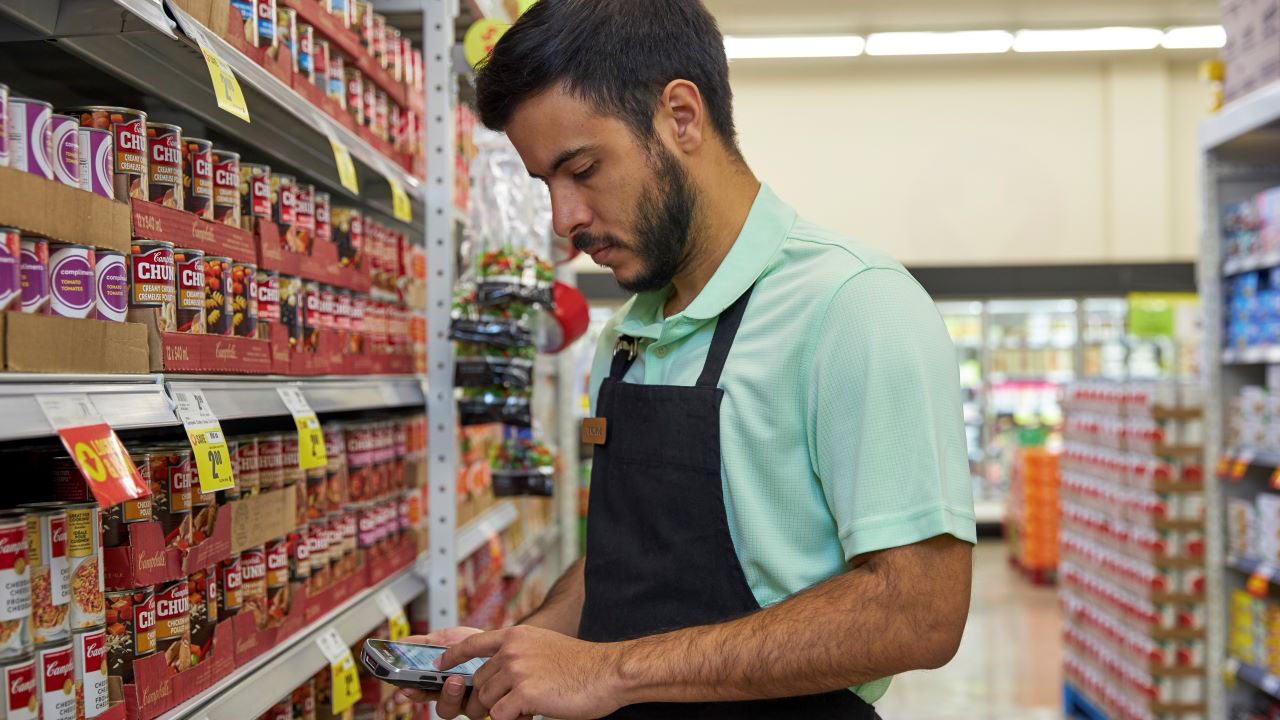
Why Now’s the Perfect Time for Retailers to Take Stock of Physical Inventory (Whether Open or Closed)
COVID-19 has forever changed the retail sector, forcing both essential and non-essential retailers to assess their omnichannel fulfillment capabilities and adapt their operating models in a matter of days – some implementing changes within hours.
For those whose doors have remained opened, the challenges have been numerous. Many creative solutions have been implemented to ensure compliance with new social distancing policies, manage increased click-and-collect service demand and migrate to contactless payment models. And retailers that temporarily closed brick-and-mortar locations have spent the past few months brainstorming ways to salvage their businesses while in a state of flux, an exercise that requires a little ingenuity and a lot of flexibility.
What’s interesting, though, is that the pressure to adapt to the changes brought about by COVID-19 is actually prompting retailers to get back to the basics – to consider ways in which they can utilize in-house resources and apply fundamental business practices to more quickly stabilize operations or reopen their businesses, depending on their current status. This is especially true when it comes to inventory management.
Getting a Pulse on Physical Inventory Levels is Vital for Retailers Seeking to Restore Order
For the last several weeks, grocers, mass market retailers, drug stores and convenience stores have had a hard time trusting the accuracy of their inventory systems. Even curbside and delivery customers have expressed frustration in the number of discrepancies between what is showing as in stock and what is actually available when store associates or personal shoppers pick their orders, sometimes just mere minutes later. Phantom inventory has been a very real, and understandable, problem.
It’s all but impossible to conduct physical inventory counts and reconcile inventory management systems when shelves are consistently empty. Even though warehouses have been fully stocked and supply chains remained strong since the COVID-19 outbreak began, stores have struggled for weeks to restock shelves fast enough to keep up with demand. Much of these restocking issues have been attributed to early panic buying that caused a ripple effect in replenishment efforts and the subsequent uptick in overall sales volume from in-store and click-and-collect orders as entire communities converged on just a few open stores to grab food, medicine and other essentials. Even traditionally high-volume grocers accustomed to thousands of people crowding their stores each week for routine grocery runs found themselves unable to keep pace with inventory turnover. It wasn’t unusual in March and April to see grocers just dropping pallets in the middle of store aisles so that customers and online order pickers could grab what they needed without delay, much like what occurs on Black Friday.
But now that the surge demand is subsiding and foot traffic is declining, it is critical that essential retailers make an effort to confirm their on-hand inventory and adjust ordering strategies based on stabilizing demand levels. Now is the time to investigate which items are actually out of stock and which are just out of sight, either misplaced on a shelf or the stockroom, to re-establish inventory system accuracy. Given current circumstances, this will be best accomplished by in-house teams, even if you have allowed third-party inventory service vendors to count stock in your stores in the past.
You can leverage the mobile computers that store associates already use for other in-store tasks or invest in a supplemental stock-taking technology solution such as Zebra SmartCount® to empower in-house staff to conduct full-store or departmental counts quickly and efficiently. You will also be able to ensure social distancing and the health status of those conducting the counts – something that could prove challenging if you allow counters not in your employ to come into your stores.
Similarly, retailers who have been closed for weeks need to allocate resources right now to audit in-store inventory levels, even if it will still be a while before they reopen. There are a few reasons for this:
1. You have to replenish before you can reopen. Many stores were essentially abandoned when stay-at-home orders were enacted, and the speed by which most locations closed means that there wasn’t time to clean up, much less conduct physical inventory counts, before employees were sent home and third-party inventory services were halted. Shelves and racks are literally in the same state of being as they were weeks ago. Now that some employees are being allowed back in the stores, it is critical to check the accuracy of your inventory systems to see what you’re starting with when you reopen and then replenish and restock accordingly.
2. The seasons have changed. Holidays such as St. Patrick’s Day and Easter have come and gone. Winter has turned to Spring, and Summer is just a month away. For those with seasonal inventory models, that means that you will likely have to turnover your front-of-house displays and a large portion of your fashion, home décor, soft line, sporting goods and outdoor stock in a very short period of time. I know many retailers are trying to figure out what, if any, of their on-hand inventory could be carried over into Summer or Fall and what to do with the inventory that can’t. At the same time, many retailers are trying to balance commitments to brands with commitments to other stakeholders, including investors who are relying on them to make decisions that will boost their bottom lines as we work toward an economic recovery. But until someone can actually get into the store and assess the current inventory situation, it will be hard to move forward with pricing discounts or redistribution decisions to try to sell-off remaining seasonal merchandise.
3. Your sales and fulfillment models have changed. Though some customers are now able to walk through your front doors, many still cannot or will not shop in store. Occupancy limitations, social distancing measures and personal safety concerns mean that the retail-to-go model will likely be here to stay for a while – possibly forever. If you want to regain and retain customers’ business, you must offer multiple shopping and fulfillment options ranging from buy online, pick up in store (BOPIS) to online ordering with same-day or next-day curbside pickup and home delivery options. That’s easier said than done, as essential retailers can tell you, considering that many clothing, sporting goods and furniture retailers haven’t traditionally used local stores as fulfillment centers for online orders. Yet, those who are able to improve their inventory visibility and increase ordering and restocking agility might find it possible, even profitable, to fulfill online orders at the store level – assuming that doing so doesn’t significantly reduce in-stock levels for in-store shoppers.
In other words, restoring inventory visibility and confidence in inventory system metrics could be the key to salvaging retailers’ brick-and-mortar businesses while boosting revenue streams from e-commerce sales channels.
But before you call in a third-party service to help you get your inventory situation sorted out, you might want to consider the short- and long-term benefits of bringing large-scale inventory counts – including all future cycle counts – in house using a self-directed scanning solution such as this one.
Four Reasons Why All Physical Inventory Counts Need to be Kept in House Right Now
As all grocers and retailers have become astutely aware, speed, agility and accuracy have become the name of the game. There’s no time for delays and no room for errors as stores – and the industry – begin to recover from COVID-19 impacts. Safety has also become a top priority, with retailers of all sizes diligent about limiting occupancy in stores to maintain proper social distancing and protect employees, partners and customers. It is for these reasons that retailers around the world are opting to conduct self-directed physical inventory counts using in-house staffing and technology resources right now versus the third-party services that may have been leveraged historically – and you should too.
- Speed: By equipping employees with handheld mobile computers, barcode scanners and/or tablets that can connect to your back-end systems, they are able to conduct full-store or partial inventories in a matter of days – possibly hours – to give you a real-time picture of inventory levels. They know your store and your merchandise better than anyone else and can quickly move from one section to the next to help you identify which products remain in high demand and need more frequent replenishment. The speed by which self-directed inventory events can occur will also help you determine how much shelf space may be needed for additional quantities of high-demand items and confirm which lower-performing items could have stock quantities reduced without gravely impacting fulfillment capabilities for in-store or e-commerce demand.
- Accuracy: Employees are vested and more accountable for count accuracy, and they’re in an ideal position to investigate inconsistencies between reported and actual on-hand inventory since they know your store well and may be able to quickly locate misplaced items. Plus, they have a greater interest in restoring shelf stock levels than third parties.
According to feedback received during Zebra’s 2020 Shopper Study, the number one frustration for store associates (43 percent) is customers complaining about out-of-stocks. Given how widespread this issue has become lately, store associates are highly motivated to reduce phantom inventory occurrences and help store leaders improve sourcing to ensure items are in store when customers want and need them. As an added bonus, when inventory systems are accurate, associates can help customers quickly verify item availability and point them to the current shelf location. This saves time and minimizes frustration for both team members and customers.
- Agility: With complete visibility into individual store and chain-wide inventory levels – and complete confidence in the accuracy of inventory system metrics – it becomes easier to adjust the flow of goods through the supply chain from day to day or week to week to prevent overstocks and shortages. It also becomes easier to calculate and modify fulfillment capacity to increase revenue streams and minimize losses as demand fluctuates.
- Safety: It is easier to ensure team member compliance with your stores’ health and safety guidelines than it is to ensure the compliance of a third party. They know your social distancing and personal protective equipment (PPE) policies and how to thoroughly disinfect the devices used in the count, giving you better control over sanitation practices. There is no need to involve additional people or devices in the process, especially since outside inventory counters have to be chaperoned while in store as standard practice, and you don’t have control over the service providers’ enforcement of device cleaning or staff health screenings.
Not Equipped to Conduct Self-Directed Physical Inventory Events Right Now? There’s a Safe, Efficient and Economical Solution
If you don’t currently have the technologies on hand to initiate employee-driven inventory counts, or mobile computing devices are already assigned to other team members for order picking, mobile point of sale (mPoS) or other customer service and inventory activities, then there are easy-to-deploy physical inventory stock-taking kits such as this one that can be shipped to you by companies such as Zebra for temporary use.
While I can’t speak for others who may offer these types of solutions, I can confirm that Zebra’s SmartCount® kits are delivered directly to your stores with all of the necessary (and fully sanitized) equipment, web-based software and support needed to start taking inventory almost right away. We also provide your corporate, regional, district and store teams complete online oversight of the process via dashboards that relay real-time inventory status at the click of a mouse.
Plus, self-directed inventory scanning solutions such as Zebra SmartCount are more economical and efficient than outsourced programs since there are no external labor costs, and there is minimal disruption to your routine operations.
If this is something that you believe would benefit your store(s) right now, please reach out to the Zebra Retail Solutions team to talk about your options. Even if you just need to plus-up your inventory scanning capabilities temporarily to get back on track as you prepare to re-open or work to restore full operations, we can help you get your team up and running quickly.
###
Editor’s Note:
Want to learn more about the benefits of in-house versus outsourced physical inventory events? These resources may help:

Tom Marcellino
Thomas (Tom) Marcellino is currently the Vice President of Business Development for Zebra’s Retail Solutions group. In this role, he oversees sales and marketing for the physical inventory management solutions that Zebra provides to retailers worldwide.
Prior to joining Zebra in 2010, Mr. Marcellino served as Executive Vice President of Business Development for Inmar, a leading supply chain analytics and logistics services company headquartered in North Carolina. Before that, Mr. Marcellino spent seventeen years with NCR Corporation in a variety of sales and marketing management positions following his graduation from Indiana State University. He oversaw commercial and manufacturing sales for NCR’s mid-east division and later ran global industry marketing for NCR’s retail/CPG supply chain solutions group.
Mr. Marcellino currently resides with his family in North Carolina.




